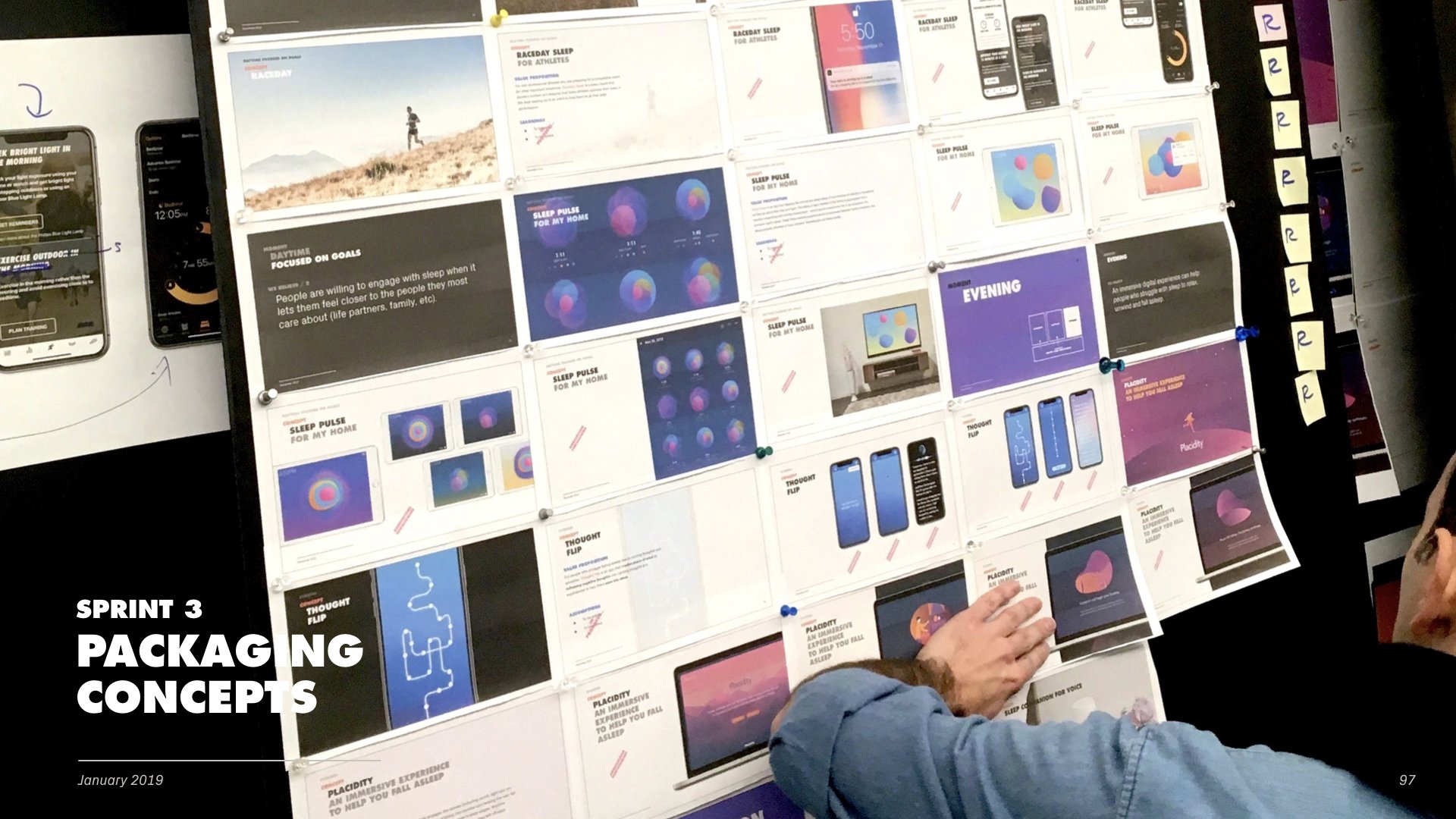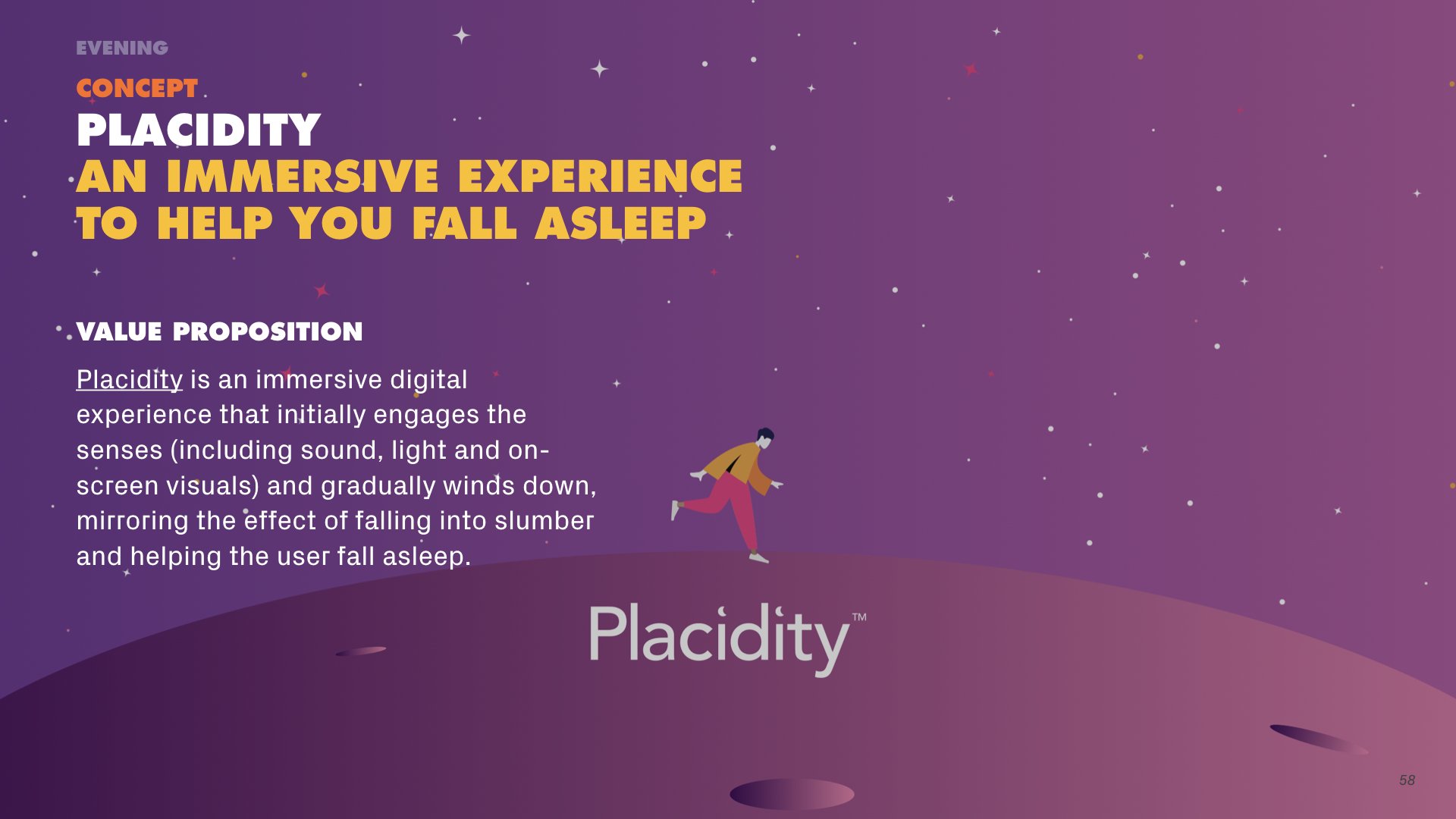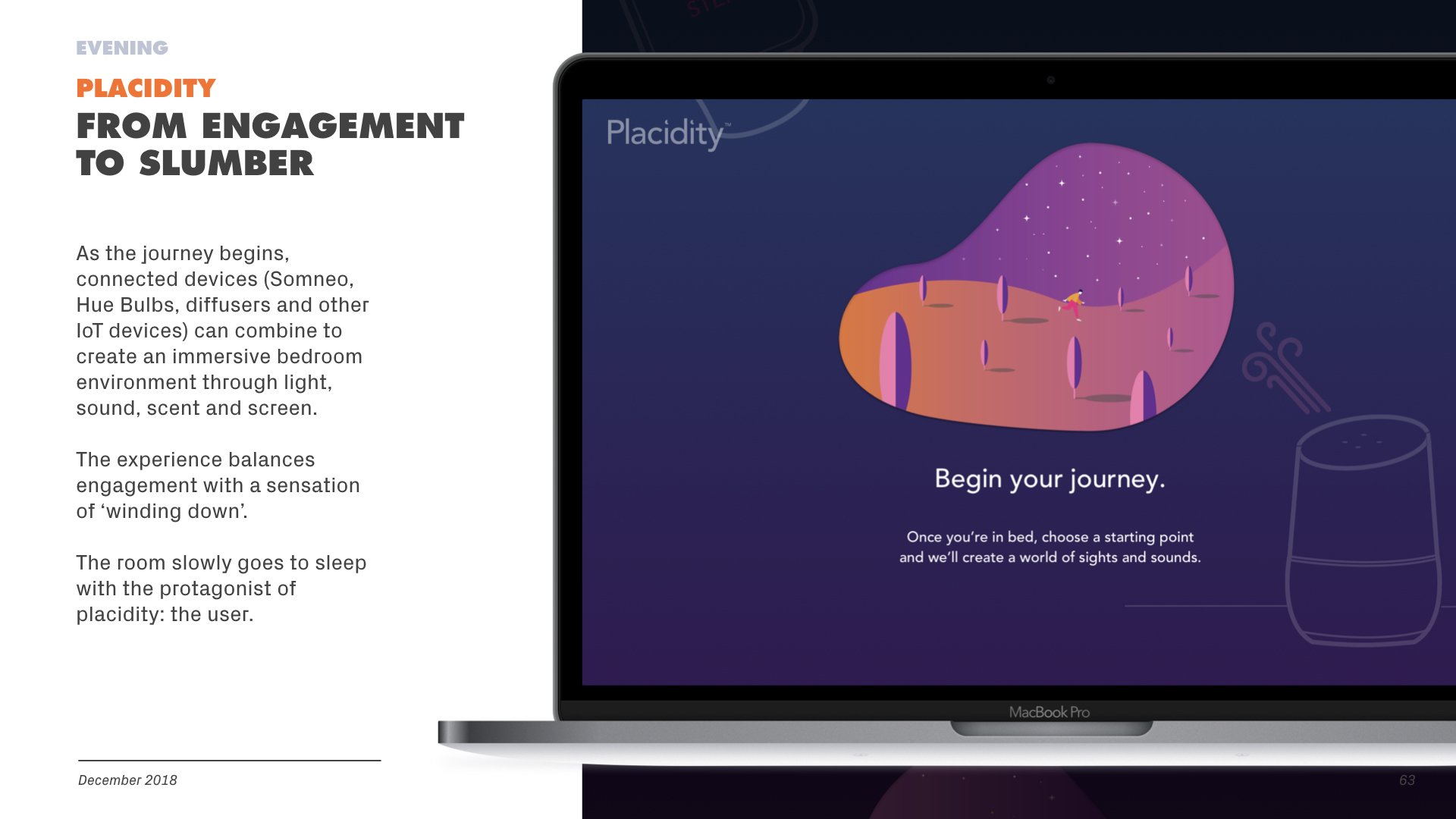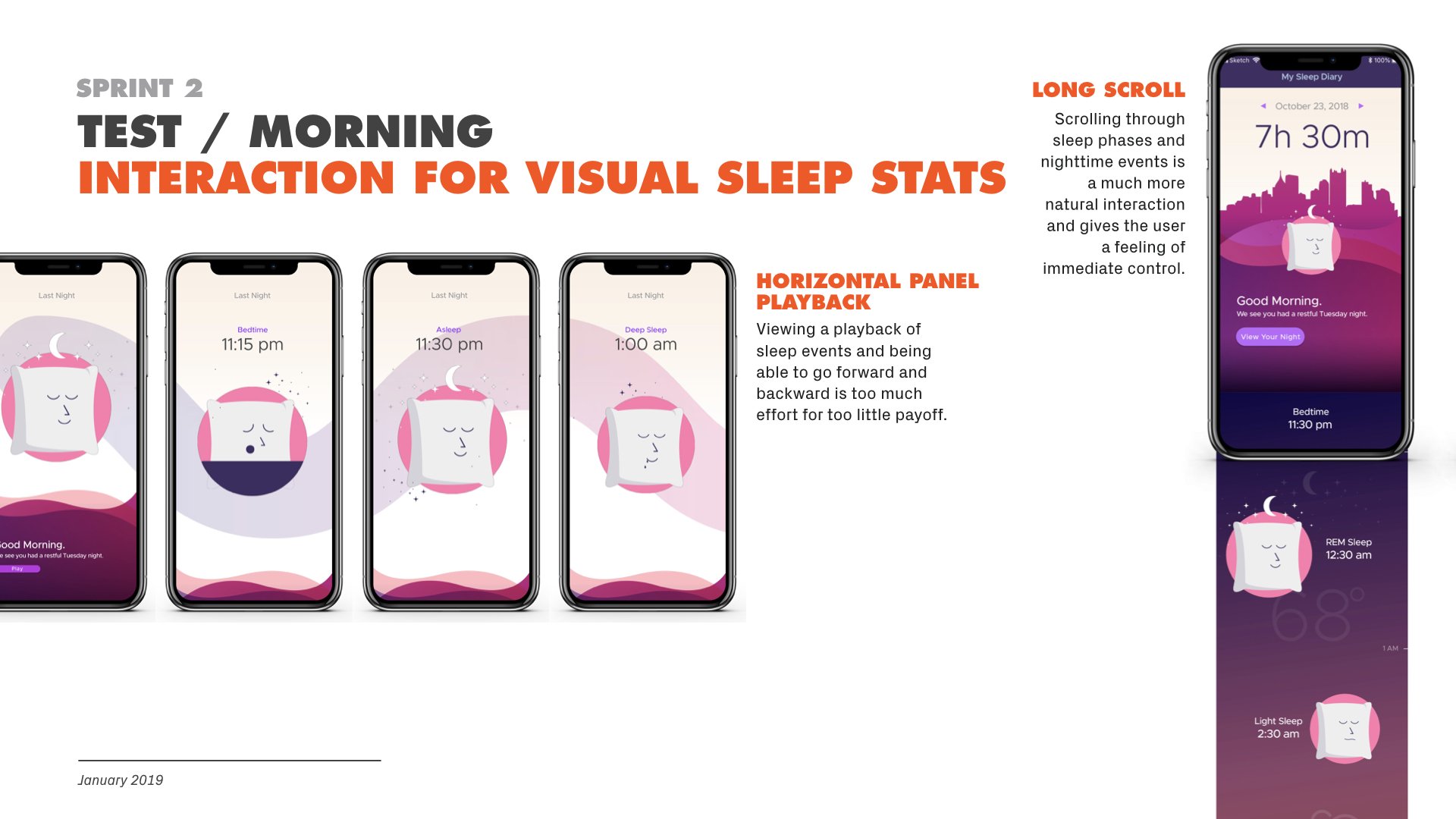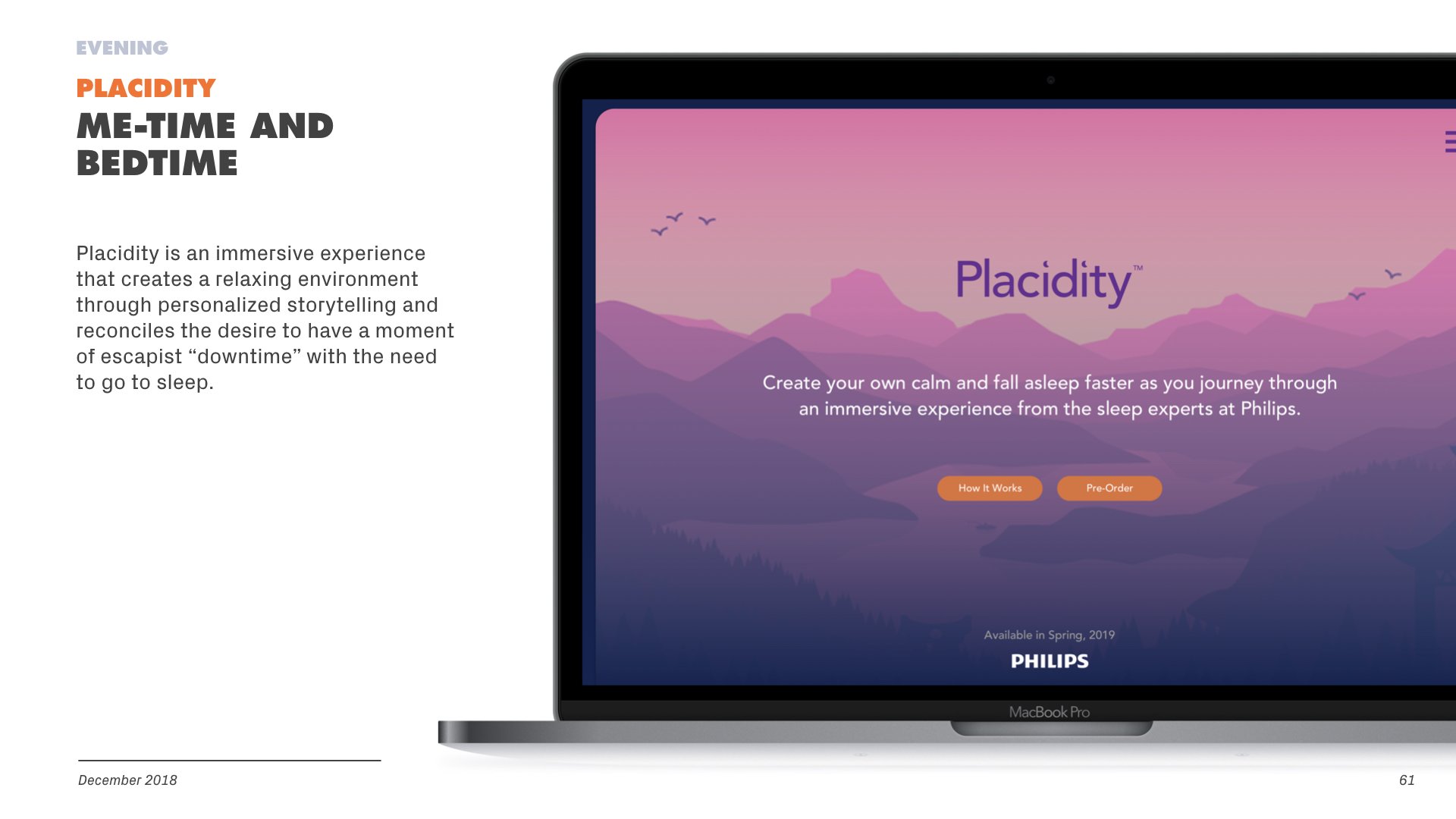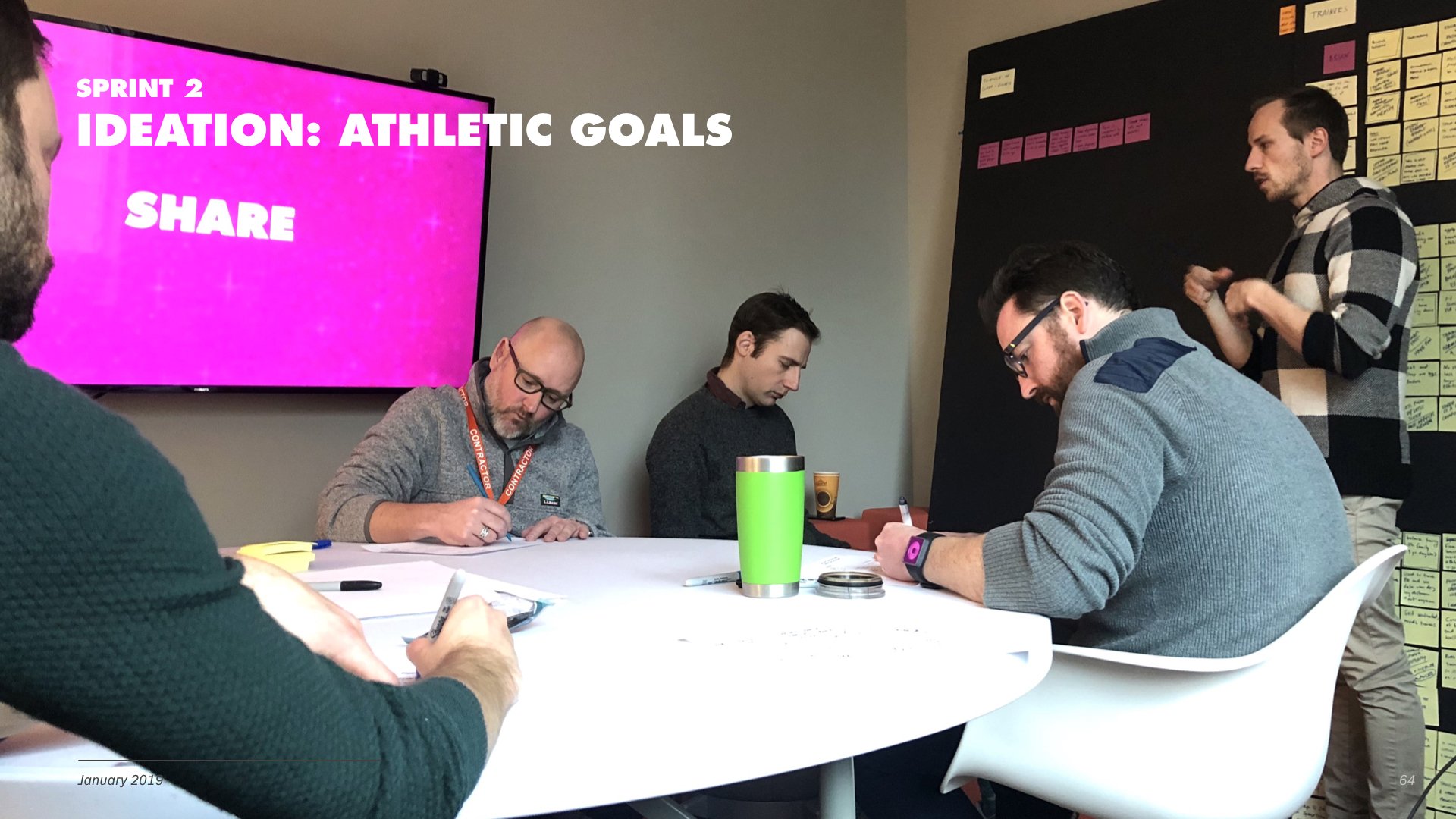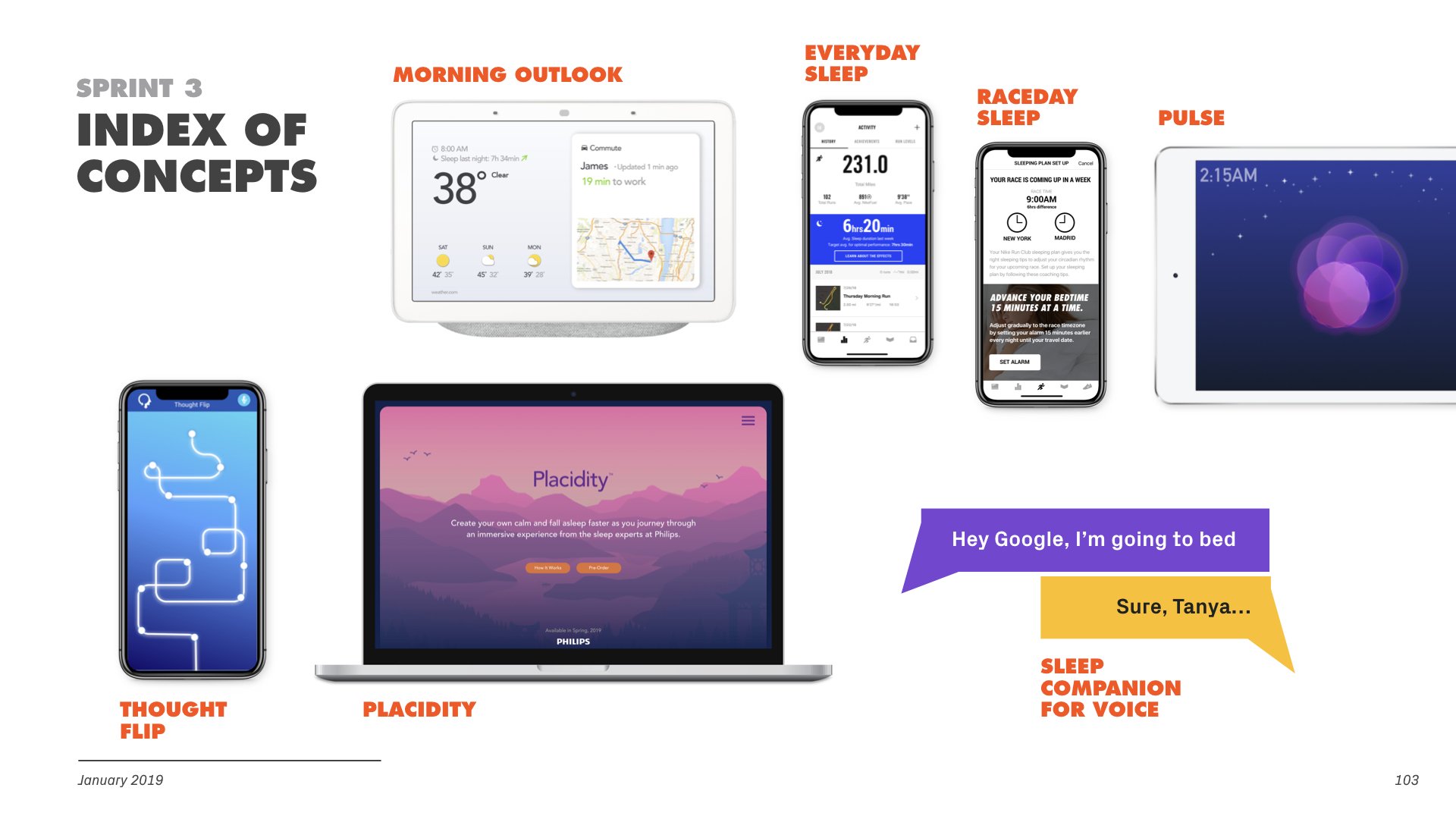Philips Case Study
Research, UX Design for Sleep Concepts
The ideation, research and UX design for showcasing sleep concepts.
Project completed while working with an international group of technologists while a UI designer for ustwo.
Responsibilities: Ideation, Research, User Interviews, Layout + Design Concepts, Prototyping, Final Design Artifacts
Overview
Project
We were tasked with immersing ourselves into Philips sleep products and services. Following the deep dive, we aligned on a project brief, defined our sprint approach, drafted initial assumptions and “how-might-we’s.” Drafting of hypotheses came next, and then ideation sessions across the moments that matter. We then created initial artifacts, planned experiments and recruited users. Interviews were conducted and documented, and then experiments debriefed. We synthesized our learnings and shared our findings.
We eventually focused on four assumptions and three “moments that matter” in regards to sleep (morning, daytime, evening):
1. People need a clear motivation to change their existing habits and embark on self improvement
2. People don’t know what to do when they can’t sleep
3. People want to know how to improve their sleep and don’t know how.
4. People expect different sleep and health products to interact with each other
Ideas
For morning we wanted to consider how to include an entire family’s sleep, and how to add a history view to enable comparisons with the past, and how to leverage knowledge that people are willing to track some aspects of their behavior without an immediate pay-off (if it is low effort and doesn’t get in the way.)
Daytime focused on athletic goals and targeted a higher level of athlete with explicit goals. We also wanted to target coaches and trainers. The team also considered embedding sleep information or interactions within the existing tools and brands that fitness enthusiasts already employ in their workouts/daily life.
Evening considerations were to provide a way for people with sleep issues to validate their intuition around their problems. We also wanted to consider what it meant to enable relaxation with digital tools.
Analysis
Each moment that mattered surfaced key learnings. Some of the items we learned through our morning concepts were that those are moments of anxiety and practical matters dominate the morning routine. And that routine extends from the time someone wakes up until they get to the workplace. Also, folks see value in validating their intuition through evidence provided by objective data. Most healthy sleepers lack a specific motivation to track their sleep, yet they already track many aspects of their lives without expecting an immediate payoff, and would reference at a later time.
User Interface Designs
Each concept had varied UI designs, but a user-centric approach was taken in each case.
Wrap
The team from ustwo was comprised of UI/UX designers, strategists, front-end and back-end developers, spent over 5 months on-site at Philips working on this project.
Case Studies: AltarTV | DSG Team Gear | Philips Sleep | Winnebago


